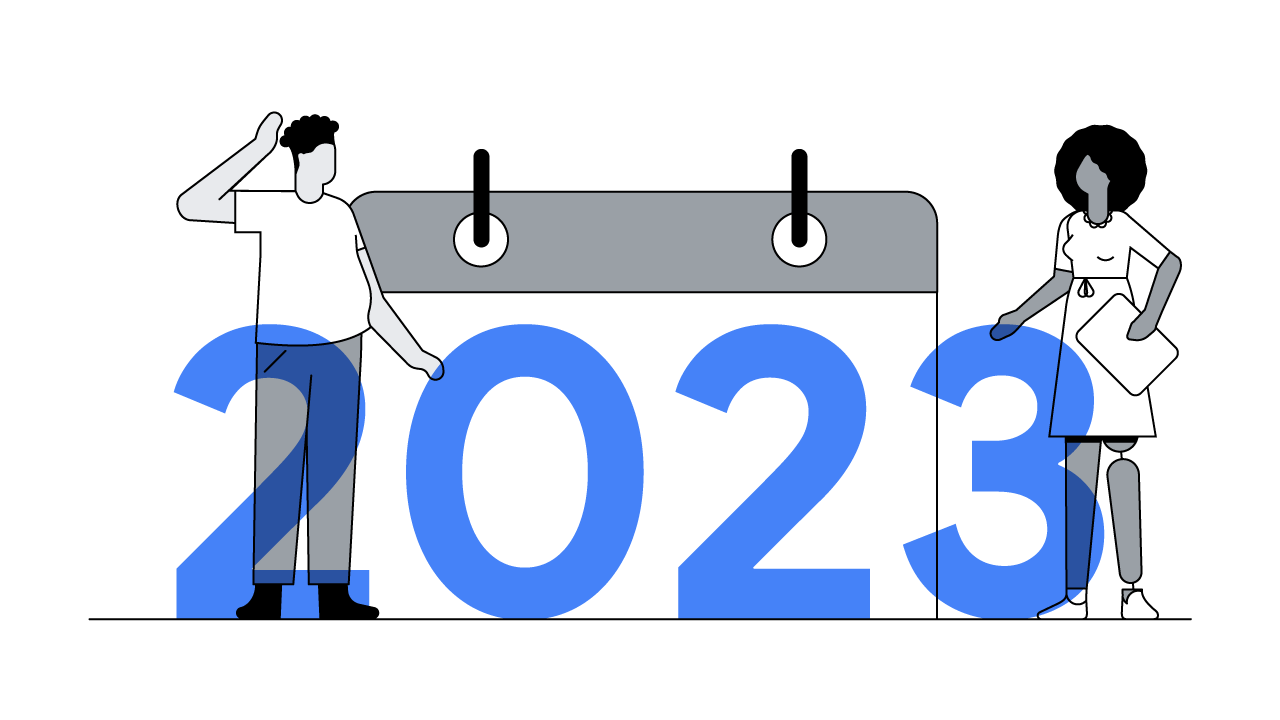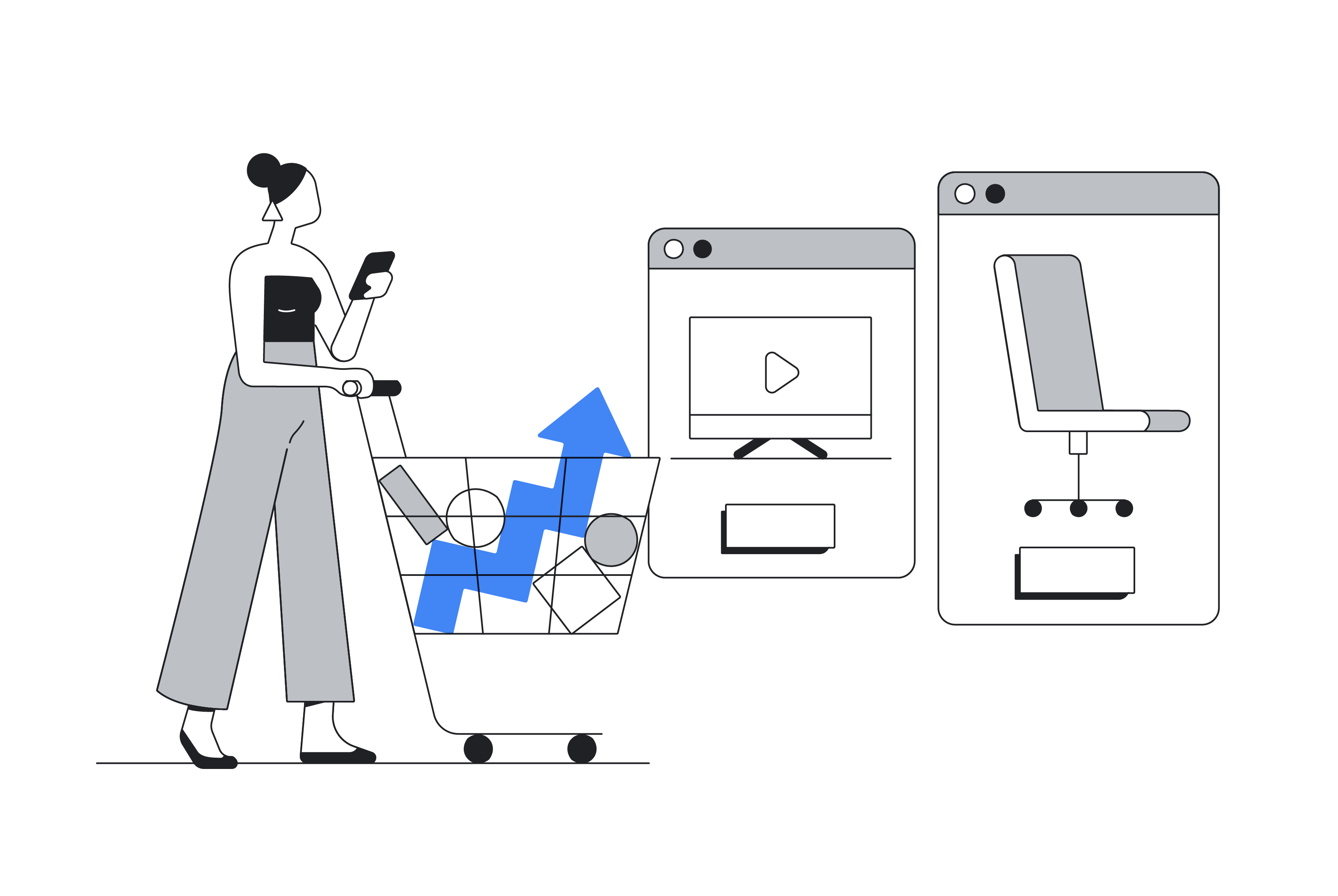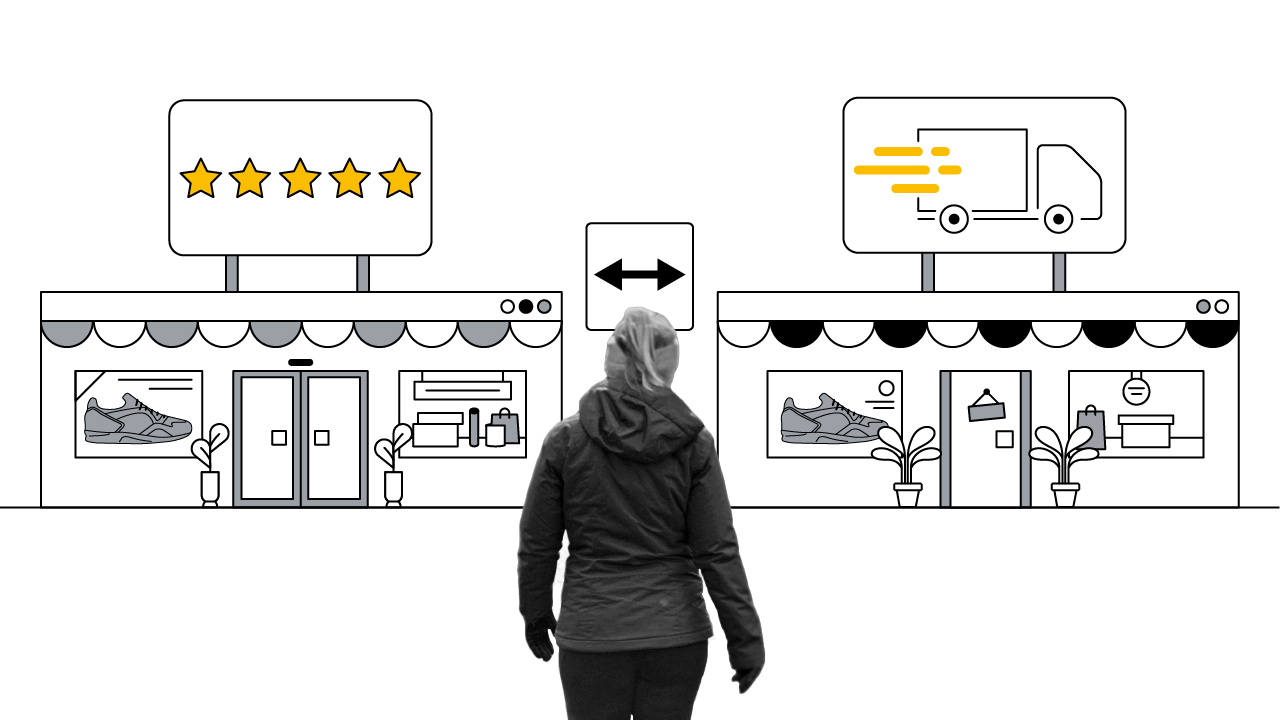The seasonal buying cycle we once knew no longer exists. Young consumers, shaped by digital-native retailers, are in a perpetual state of shopping for fashion online. What does this mean for advertisers? We conducted some research to find out.
We partnered with Canvas8 to explore how fashion influences are changing for 18-30-year-olds in the U.K. Over a series of articles we’ll explore how brands and retailers can adapt to meet their needs. In this article, we dive deeper into the changing fashion landscape and how retailers can win these perpetual shoppers.
The changing fashion landscape
Today’s fashion consumers are on a perpetual path to purchase when it comes to new clothes. Over the last 30 years, the old spring/summer and autumn/winter cadence of the industry has been completely transformed by the growth of the internet and ‘fast fashion’ business models. In the U.K., there are over 10,000 Google searches for fashion items every minute, with very little seasonal variation.1
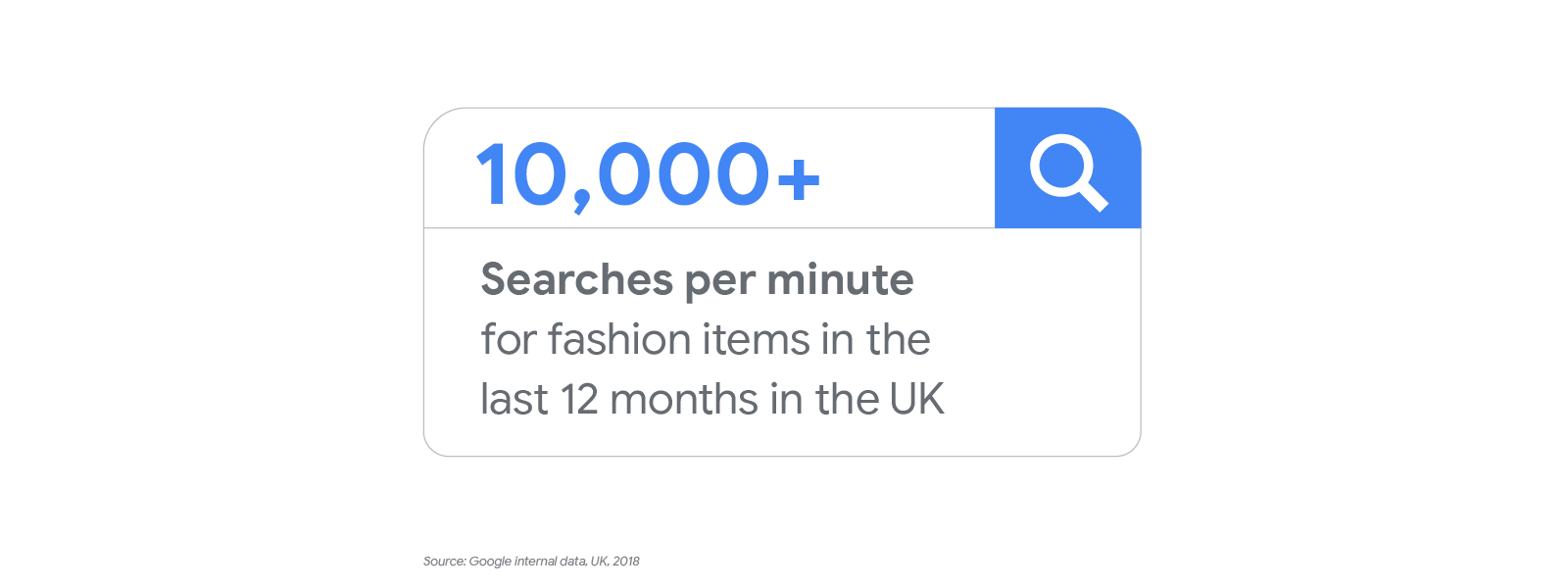
For 18-30-year-old fashion shoppers, they have not lived in a world without e-commerce and social media, resulting in very different attitudes towards buying fashion that not only shape the category today but will have a big impact on its future going forward.
The market backdrop: The seasonal buying cycle no longer exists
Just as the phrase “going online” has become outdated by our seemingly universal connection to the internet, the same is true for this audience when it comes to “going shopping” for fashion items. Through online video, social media and search, they’re always being exposed to or are exploring some form of fashion goods on a daily or weekly basis.
The retailers that these shoppers value have become the trendsetters.
One exemplary shopper (29-year-old male) said: “I’m always looking throughout the week for something new to wear for the weekend. It’s always online; straight onto my phone.”2
The ability to browse and shop anywhere, anytime, is changing the way shoppers identify and adopt new styles. Mobile devices are key; searches for apparel via mobile devices are still growing more than double that of all devices combined.
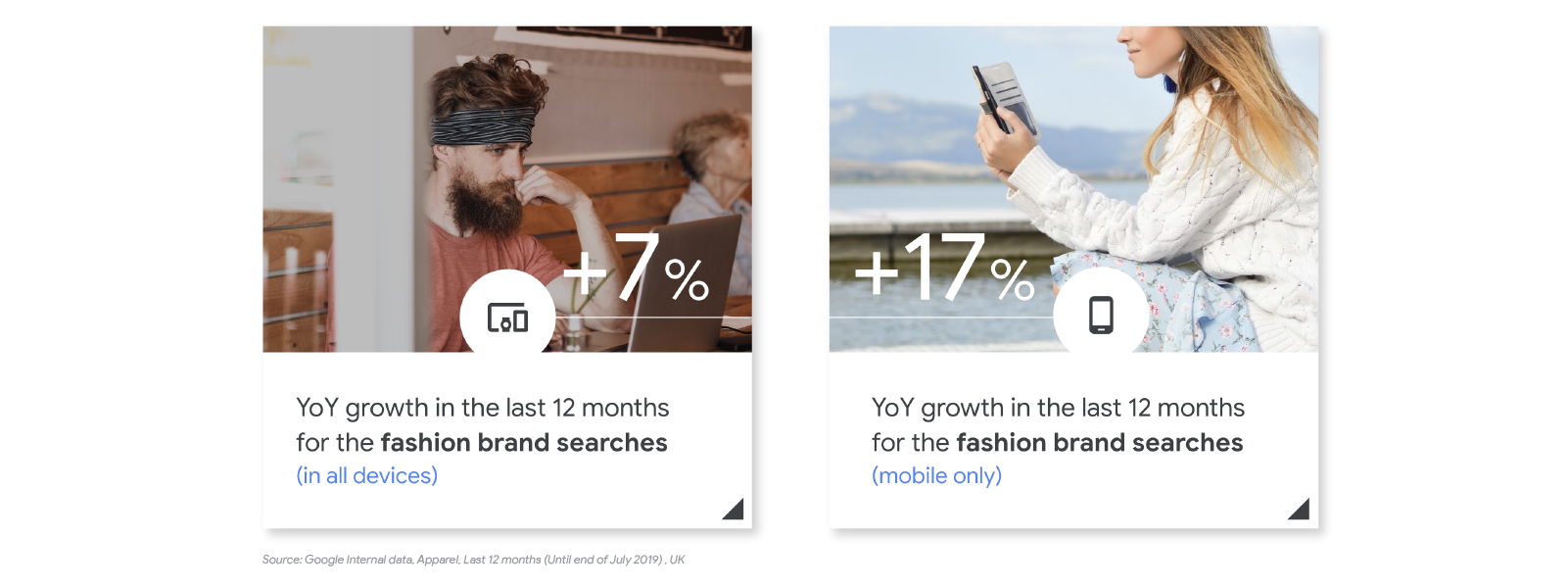
The result is online has supplanted old linear models of consumer awareness and inspiration. The retailers that these shoppers value have become the trendsetters, no longer just the end point of purchase. Online has made the exploration of new items frictionless, creating new expectations for items to be added at least weekly, and drastically speeding up the cycle of fashion trends.
“I think technology has made things easier. Rather than getting a subscription to a magazine every month and find out what’s new – I can look at Missguided, Nasty Gal or Pretty Little Thing and within two days they have a completely new range.”4
Turn data into action
One of the main reasons why agile online 'fast fashion' retailers have been so successful in this environment is their ability to turn data into action. Leveraging past purchase data together with a large catalogue of items, enables online retailers and platforms to reflect back on individuals' style and what they may like next, even with lesser-known brands.
A 23-year-old female shopper highlighted positively on how algorithms are perceived to help: "The advertising that comes up is linked to the searches I've previously made. Brands that I've never heard of before are advertised, and I am inclined to view their websites."5
Young fashion shoppers understand the ads they’re being served, and the scale of the dataset retailers are using to make these recommendations, making the output more credible. Retailers and advertisers still need to be thoughtful about the collection and use of data; the more relevant they can make their communications the better. On YouTube, we've seen that customers pay 3X more attention to ads that are relevant to them.6
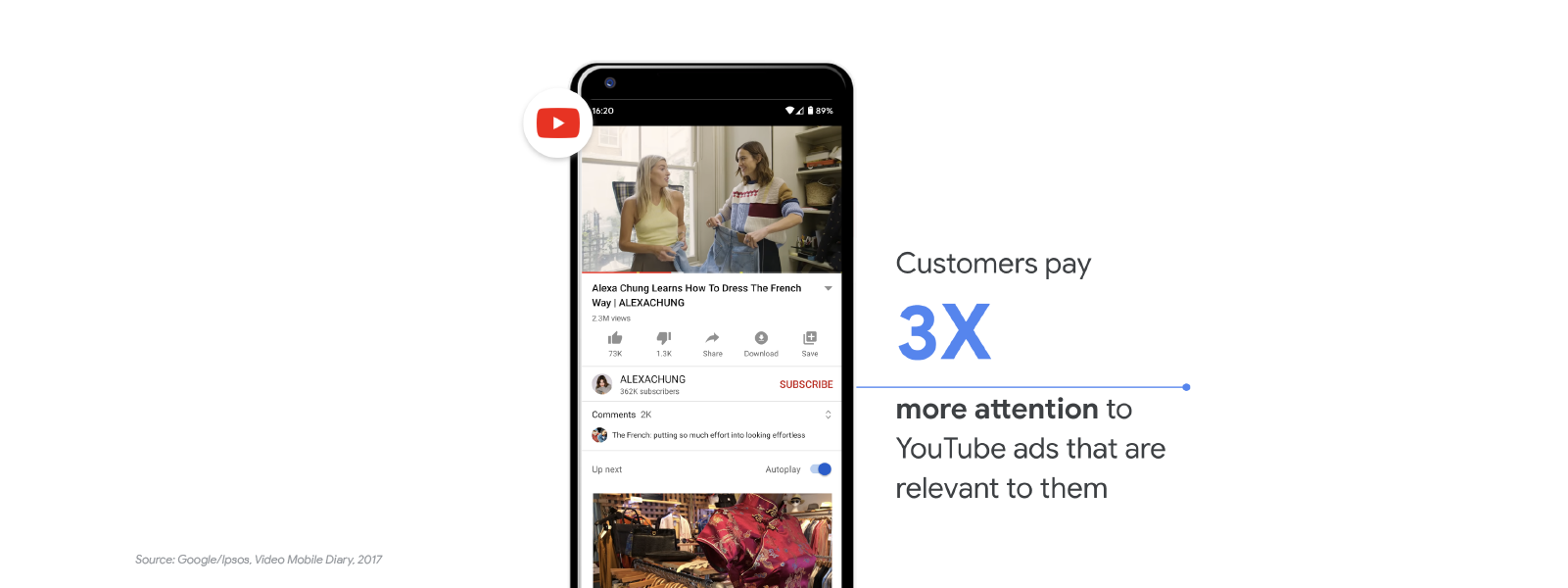
What this means for marketers
Plan for the perpetual shopper with always-on recommendations as they explore and evaluate the category. Always-on advertising campaigns should be the minimum for any fashion retailer or brand interested in growing business amongst this audience. The objective should be to both trigger new purchase journeys, as well as compete for existing shoppers when they’re evaluating their next purchase.
Three things to also consider:
- Real-time inspiration: In a state of constant discovery, consumers are happy to receive personalised recommendations – advertising is perceived to be helpful. Make sure you show up and serve the ads they want, at the right moment.
- Pressure for newness, whilst feeling sustainably-minded: Social media drives a growing pressure to continually refresh wardrobes, however conflicts with many shoppers’ emerging sustainable lifestyle goals. Be mindful about how your brand shows up in the marketplace.
- Convenient consumption: Shoppers are fatigued by never-ending choices online and frustrated with in-store experiences that aren’t keeping up with the ever-icreasing expectations. Turn data into action to help cut through the noise and make personalised recommendations for the shopper.
